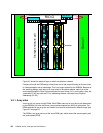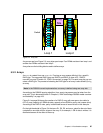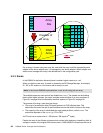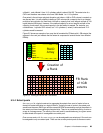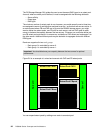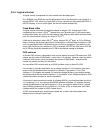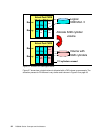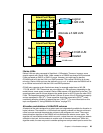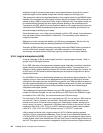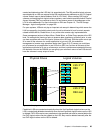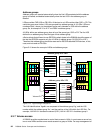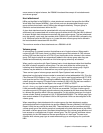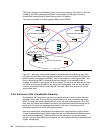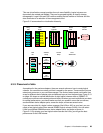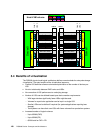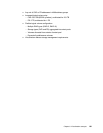94 DS8000 Series: Concepts and Architecture
allocation of logical volumes across ranks to improve performance, except for the case in
which the logical volume needed is larger than the total capacity of the single rank.
This construction method of using fixed extents to form a logical volume in the DS8000 allows
flexibility in the management of the logical volumes. We can now delete LUNs and reuse the
extents of those LUNs to create other LUNs, maybe of different sizes. One logical volume can
be removed without affecting the other logical volumes defined on the same extent pool.
Compared to the ESS, where it was not possible to delete a LUN unless the whole array was
reformatted, this DS8000 implementation gives you much more flexibility and allows for on
demand changes according to your needs.
Since the extents are
cleaned after you have deleted a LUN or CKD volume, it may take some
time until these extents are available for reallocation. The reformatting of the extents is a
background process.
IBM plans to further increase the flexibility of LUN/volume management. We cite from the
DS8000 announcement letter the following Statement of General Direction:
Extension of IBM's dynamic provisioning technology within the DS8000 series is planned to
provide LUN/volume: dynamic expansion, online data relocation, virtual capacity over
provisioning, and space efficient FlashCopy requiring minimal reserved target capacity.
5.3.6 Logical subsystems (LSS)
A logical subsystem (LSS) is another logical construct. It groups logical volumes, LUNs, in
groups of up to 256 logical volumes.
On an ESS there was a fixed association between logical subsystems (and their associated
logical volumes) and device adapters (and their associated ranks). The association of an
8-pack to a device adapter determined what LSS numbers could be chosen for a volume. On
an ESS up to 16 LSSs could be defined depending on the physical configuration of device
adapters and arrays.
On the DS8000, there is no fixed binding between any rank and any logical subsystem. The
capacity of one or more ranks can be aggregated into an extent pool and logical volumes
configured in that extent pool are not bound to any specific rank. Different logical volumes on
the same logical subsystem can be configured in different extent pools. As such, the available
capacity of the storage facility can be flexibly allocated across the set of defined logical
subsystems and logical volumes.
This predetermined association between array and LSS is gone on the DS8000. Also the
number of LSSs has changed. You can now define up to 255 LSSs for the DS8000 (it might
be limited at GA to 128 LSSs). You can even have more LSSs than arrays.
For each LUN or CKD volume you can now choose an LSS. You can put up to 256 volumes
into one LSS. There is, however, one restriction. We already have seen that volumes are
formed from a bunch of extents from an extent pool. Extent pools, however, belong to one
server, server 0 or server 1, respectively. LSSs also have an affinity to the servers. All even
numbered LSSs (X’00’, X’02’, X’04’, up to X’FE’) belong to server 0 and all odd numbered
LSSs (X’01’, X’03’, X’05’, up to X’FD’) belong to server 1. LSS X’FF’ is reserved.
zSeries users are familiar with a logical control unit (LCU). zSeries operating systems
configure LCUs to create device addresses. There is a one to one relationship between an
LCU and a CKD LSS (LSS X'ab' maps to LCU X'ab'). Logical volumes have a logical volume
number X'abcd' where X'ab' identifies the LSS and X'cd' is one of the 256 logical volumes on
the LSS. This logical volume number is assigned to a logical volume when a logical volume is



